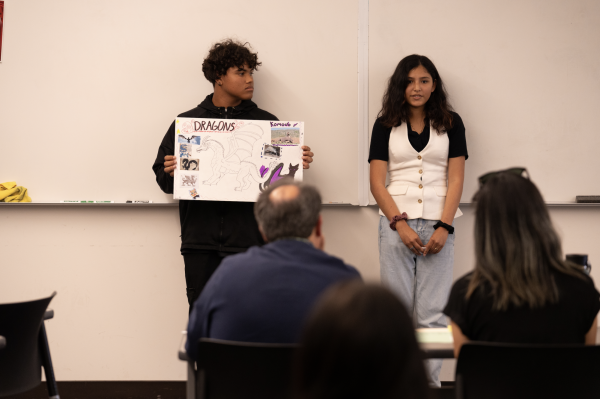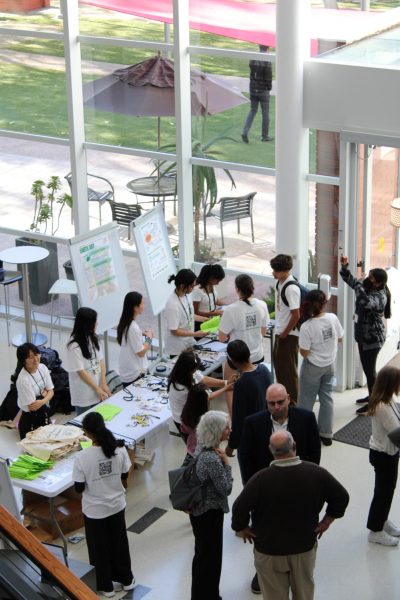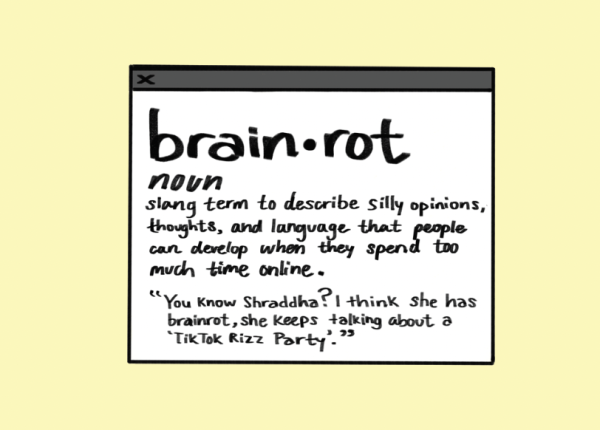The climate crisis’ effects on Sunnyvale

Photo courtesy of Santa Clara County Parks
As the predicted effects of climate change begin to take a prominent hold on our daily lives, the world has to learn to adapt. Globally, humanity faces the immense challenge of adapting to the build up of greenhouse gasses which are caused by human activity. This build up is responsible for issues ranging from from rising temperatures to rising sea levels. For Sunnyvale, effects during recent years include: heatwaves with highs of 109 degrees Fahrenheit, which were responsible for power outages; the longstanding California drought and smoke during the rather newly established fire season.
According to a report from 2020, Sunnyvale was totaled to be producing 564,827 metric tons of carbon dioxide equivalent, also known as greenhouse gasses (though partially reduced by COVID-19). This would account for 0.1% of California emissions, despite making up 0.4% of the state’s population.
Still, Sunnyvale remains a part of the global biosphere, and as a result is privy to the polarities that climate change induces. According to the Santa Clara County Office of Sustainability, should the world continue on a business as usual track by 2050, Sunnyvale is expected to experience extreme heat up to 116 degrees Fahrenheit in urban areas. With higher averages worldwide, the risk of drought becomes increasingly pertinent in mediterranean climates — desert and temperate — such as Sunnyvale.
Contrarily, surpluses of water also pose a threat, according to Kristel Wickham, Chair of the Sunnyvale Sustainability Commission.
“Flooding is actually a pretty significant concern,” Wickham said. “Especially low lying areas north of the 101 and 237.”
Sea level rise also poses risks to established infrastructure and could encroach on coastal wetlands, which according to KQED in partnership with the Pulitzer Center’s Connected Coastline reporting initiative, is also mostly affecting the northern part of the city due to its proximity to the bay.
However, according to Wickham, sea level rise is a long-term issue with the predicted effects growing increasingly concerning over time.
“Most of the modeling that I’ve seen has shown a steady increase over time,” Wickham said. “So you do end up being able to plan for it.”
Following the Climate Action Plan 2.0, established in 2019, in order to reach the goal of 56% emissions reductions below the 1990 level by 2030 (for context, the 2020 data shows the city is at 44% reduction from the 1990 levels). The game plan is outlined by the Sunnyvale Climate Action Playbook, which breaks down the city’s approach to climate change into 46 plays to be worked on towards 2023. The plays are organized into six strategies including promoting clean energy, decarbonizing buildings, decarbonizing transportation and sustainable land use, managing resources sustainability, empowering the community and adapting to a changing climate. According to Wickham, the city is also in the process of outlining an updated strategy for 2028.
Most of the steps center around lowering emissions and mitigating the effects, focusing on innovative planning and efficient energy use. Currently, electricity accounts for less than 1% of emissions following engagement in the Silicon Valley Clean Energy initiative, a program which encourages renewable energy. The largest portion of emissions still comes from transportation emissions, accounting for almost 50% of the city’s emissions. One exception to the mitigation approach though is strategy six, which focuses on adaptation, a newer approach to the playbook. These steps include things like risk evaluation, flood control, sea walls and nature-based adaptation along the shoreline and community resiliency.
“The first version of climate action plans didn’t even mention adaptation at all,” Wickham said. “It was like, we’ll deal with that a little bit later when things start happening. Now, things are starting to happen.”
Despite the progress, there have still been bureaucratic delays due to a high turnover rate in the city administration, the COVID-19 pandemic and budget.
“In my opinion within the inner workings of the city, not every department is fully enthusiastic about it,” Wickham said. “They kind of think, well that’s Environmental Services department who is in charge of the playbook. They are. But the planning, and the building, department and public works. They all have significant roles to play.”
It is also important to note that the city has set accelerating climate action as one of the top six priorities for the past five years. Ultimately, Sunnyvale is a small part of tackling the issue of climate change but its actions will still have an impact.














